Best GUI Tools for Displaying Search Results to Buy in December 2025
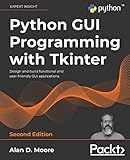
Python GUI Programming with Tkinter: Design and build functional and user-friendly GUI applications, 2nd Edition


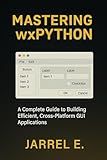
Mastering wxPython: A Complete Guide to Building Efficient, Cross-Platform GUI Applications


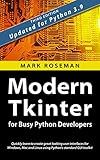
Modern Tkinter for Busy Python Developers: Quickly learn to create great looking user interfaces for Windows, Mac and Linux using Python's standard GUI toolkit


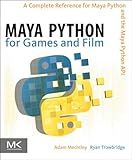
Maya Python for Games and Film: A Complete Reference for Maya Python and the Maya Python API
- QUALITY ASSURANCE: EACH BOOK IS VETTED FOR GOOD CONDITION.
- BUDGET-FRIENDLY: SAVE MONEY WITH AFFORDABLE PRE-OWNED TITLES.
- ECO-FRIENDLY CHOICE: SUPPORT RECYCLING BY BUYING USED BOOKS.


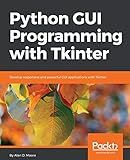
Python GUI Programming with Tkinter: Develop responsive and powerful GUI applications with Tkinter


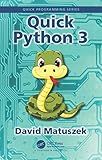
Quick Python 3 (Quick Programming)


To display search results in a Python Tkinter window, you can create a text widget or label within your Tkinter interface where the results can be shown. You can update the text widget or label with the search results by setting the text attribute of the widget to the search results. You can also format the search results before displaying them in the Tkinter window by using string formatting or concatenation. Lastly, you can use a button or entry widget to trigger the search and display the results in the Tkinter window when the user performs a search.
How to group search results by category in a Python Tkinter window?
To group search results by category in a Python Tkinter window, you can create a GUI application with a search input field and a listbox to display the search results grouped by category. Here is an example code that demonstrates how to achieve this:
import tkinter as tk
Sample search results grouped by category
search_results = { 'Category 1': ['Result 1', 'Result 2', 'Result 3'], 'Category 2': ['Result 4', 'Result 5', 'Result 6'], 'Category 3': ['Result 7', 'Result 8', 'Result 9'] }
def search(): query = search_entry.get() results_listbox.delete(0, tk.END)
for category, results in search\_results.items():
results\_listbox.insert(tk.END, f'{category}:')
for result in results:
if query.lower() in result.lower():
results\_listbox.insert(tk.END, f' - {result}')
Create a Tkinter window
window = tk.Tk() window.title('Search Results') window.geometry('400x300')
Create a search input field
search_label = tk.Label(window, text='Search:') search_label.pack()
search_entry = tk.Entry(window) search_entry.pack()
search_button = tk.Button(window, text='Search', command=search) search_button.pack()
Create a listbox to display search results
results_listbox = tk.Listbox(window) results_listbox.pack(fill=tk.BOTH, expand=True)
window.mainloop()
In this code:
- The search_results dictionary contains sample search results grouped by category.
- The search() function is called when the Search button is clicked. It retrieves the search query from the input field, clears the listbox, and populates it with search results grouped by category.
- The Tkinter window is created with a search input field, a search button, and a listbox to display the grouped search results.
You can modify the search_results dictionary with your actual search results data and customize the GUI elements to fit your requirements.
What is the most efficient method to populate search results in a Python Tkinter window?
The most efficient method to populate search results in a Python Tkinter window is to use a Listbox widget.
Here is a simple example of how to populate search results in a Tkinter window using a Listbox widget:
import tkinter as tk
def search(): query = entry.get() # Get the search query results = [] # Dummy search results # Populate search results based on the query for i in range(10): results.append(f"Result {i+1}")
# Clear the existing search results
listbox.delete(0, tk.END)
# Populate the Listbox widget with the search results
for result in results:
listbox.insert(tk.END, result)
Create a Tkinter window
window = tk.Tk() window.title("Search Results")
Create a search entry field
entry = tk.Entry(window) entry.pack()
Create a search button
search_button = tk.Button(window, text="Search", command=search) search_button.pack()
Create a Listbox widget to display search results
listbox = tk.Listbox(window) listbox.pack()
Start the Tkinter main loop
window.mainloop()
In this example, when the user enters a search query in the entry field and clicks the search button, the search function is called. The search function populates the search results in a Listbox widget by deleting the existing results and inserting the new results. The search results are displayed in the Listbox widget in the Tkinter window.
How to customize the appearance of search result items in Python Tkinter?
To customize the appearance of search result items in a Python Tkinter application, you can use the Treeview widget to display the search results in a tabular format. You can customize the appearance of the search result items by specifying the column headings, row data, font styles, colors, and alignment.
Here is an example code snippet that demonstrates how to customize the appearance of search result items in Python Tkinter:
import tkinter as tk from tkinter import ttk
root = tk.Tk() root.title("Search Results")
Create a Treeview widget to display search results
tree = ttk.Treeview(root) tree["columns"] = ("name", "age", "gender") tree.heading("#0", text="ID") tree.heading("name", text="Name") tree.heading("age", text="Age") tree.heading("gender", text="Gender") tree.column("#0", stretch=tk.YES) tree.column("name", stretch=tk.YES) tree.column("age", stretch=tk.YES) tree.column("gender", stretch=tk.YES)
Insert some sample data into the Treeview widget
data = [ (1, "Alice", 25, "Female"), (2, "Bob", 30, "Male"), (3, "Charlie", 35, "Male"), (4, "David", 40, "Male"), ] for i, (id, name, age, gender) in enumerate(data): tree.insert("", "end", text=str(id), values=(name, age, gender))
tree.pack()
root.mainloop()
In this example, we create a Treeview widget with columns for displaying the search result items. We specify the column headings and insert sample data into the Treeview widget. You can further customize the appearance of the search result items by changing the font styles, colors, alignments, and padding within the Treeview widget.
What is the purpose of using a search bar in a Python Tkinter window?
The purpose of using a search bar in a Python Tkinter window is to allow users to easily search for specific information within a dataset or document displayed in the window. The search bar typically enables users to enter keywords or phrases, which are then used to filter and display only the relevant information. This can greatly enhance user experience by making it quicker and more efficient to find specific data or content.
What is the significance of using a search button in a Python Tkinter window?
A search button in a Python Tkinter window allows users to input search queries and retrieve relevant information or content from a database, file, or website. This can improve user experience by making it easier to find specific information quickly and efficiently. By pressing the search button, users can trigger the search function and receive results based on their input. This can be particularly useful in applications such as databases, web browsers, or content management systems where users frequently need to search for specific data or information. Overall, the search button enhances the functionality of the Tkinter window and facilitates effective information retrieval for users.
